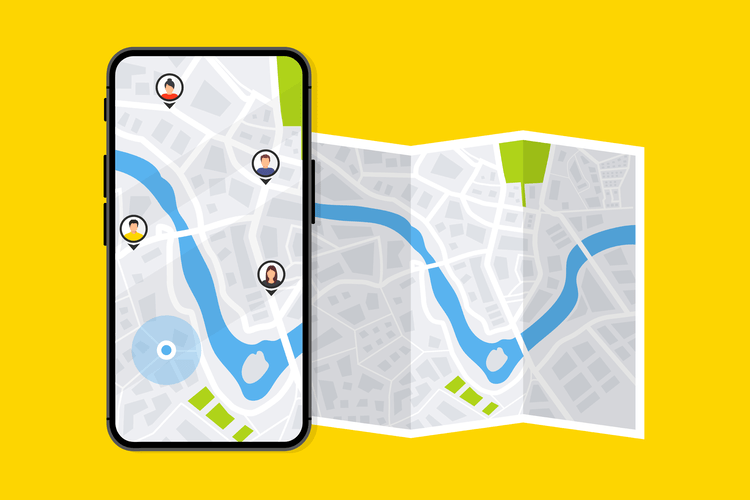How To Design The Information Architecture Of Your Site
2 Tháng Hai, 2022
Content
Some of the best information architects have a background of knowledge of manipulating data. Navigational logic should remain consistent throughout the product experience. If you have a dropdown under “Shop”, the sub-menu items should remain focused on the product-based categories that the user expects to see. As intuitive as your navigational mental models might be, text links alone are not always self-explanatory. You can use images to give an example of what users will find when they click on a label or category.
- A better understanding of the project allows the designers and developers to estimate when the website will be ready to launch.
- When designing an information architecture you need to consider a number of things.
- A hybrid sort will let you go one step further and tell you if your content does in fact fit within those labels and if not you’ll also pick up some new ideas to iterate your taxonomy further.
- But after a while people start to focus more on remembering where they saw something than thinking about where they would look for it.
Certainly avoid going above eight elements and when adding more sections, try chunking the groups into separate navigation. You should use other elements such as social proof, or the companies value proposition to answer these questions and objections. However, the information architecture itself needs to be built around the user’s needs. The result of this wrong starting point is that any information architecture will fail because users won’t find answers to their questions. Poor content choices can significantly impact how effective your information architecture is.
Visitors to Coda’s website are likely looking for a good web design application, and likely already know the features they want. Coda doesn’t need to educate visitors on what web design is or how IDEs work; they assume that the main persona is of a web designer who’s familiar with this type of software and how it works. The bottom-up architecture model looks at the detailed relationships between content first.
It’s usually pretty easy to interpret the results of this activity. The spreadsheet I described above, or the outputs from the tools, show a fairly clear picture of what works and what didn’t. When interpreting the results, think not only about what happened but why it happened. If they choose a group and feel as if they’ve made the wrong choice (usually this will happen as they don’t see anything that helps at the next level), go back one level and ask them to choose again.
Whats The Difference Between Ia And Ux?
And you can often involve more people than you would ever reach face-to-face, giving you a lot of useful information. I’m not really asking them to find the answers, as the content won’t be available yet, but asking them where they would look for the information. I show them the IA step-by-step and ask them to indicate where they’d look – it’s that easy. There’s also a primary navigation bar for different areas of the site (e.g. forums, job board, freelancing guides, etc.). Navigation and structure are kept simple, which enhances the usability of the site.

CareerFoundry is an online school for people looking to switch to a rewarding career in tech. Select a program, get paired with an expert mentor and tutor, and become a job-ready designer, developer, or analyst from scratch, or your money back. Pen and paper is all too often underused, https://globalcloudteam.com/ although it’s very cheap, simple to use, and effective. Depending on the size of a website, IA can be a complex task requiring ongoing maintenance. If you’ve heard about UX design, you’ve probably come across information architecture, or as it’s often written for short ‘IA’.
What’s more, after an unpleasant experience with the product, users will unlikely return to it ever again. Although the home page of a website is generally structured to give users easy access to other parts of the site, it’s important to remember that not all users will land on a website from the homepage. Every page should be designed in a way that helps users understand where they are, and where they need to go to achieve their goals. It is the responsibility of information architects to provide users with the necessary tools to complete their tasks without spending too much time finding their way around the site.
Strict Hierarchy Pattern
That will give you valuable insight into what features people are using and what they do on your website and why. It shows if the names of categories are accurately conveyed and if they accurately convey the content. It also shows us if the categorization is done in a user-centered manner, and if the titles are distinguishable from one another. To create a sitemap, you need to have content, which is grouped and labeled, and then presented in a diagram. Before you can create sitemap and navigation, your IA needs to be defined.
While creating a website every experienced website design company creates wireframes. Because a wireframe can offer a lot more than just the outline of the website. It will help you to get a better understanding of how the internet will be arranged on your website. Conducting in-depth research on what your prospects need is considered one of the most effective practices of the information architecture design process. The more you are able to lead your users the better results you will be able to produce. The data you collect during the audience research process will allow you to create a detailed user persona.
In this book, readers get a seven-step process for tackling even the messiest hierarchies, to help break the work down and make it manageable. Published in 2005, Peter Morville’s book about information overload and finding content in the world of Google is as valid now as it was then. He digs into the question “why does it matter how information is structured, if Google can magically find the answers to your questions? XMind is yet another mapping software, with the added benefit of allowing IAs to save their maps to Evernote. They offer a full library of maps for users to share their finished work or see others’ work.
What Are The Information Architecture Patterns?
Creating a well thought out IA doesn’t just help your users navigate around your site it can also provide everyone within your company with a bird’s-eye view of the product end to end. This type of overview can be invaluable in helping new colleagues understand the product and find their way around it and can also be used to guide product decisions. Things like navigation layout and styling, breadcrumbs, and other way-finding elements will be dictated by your IA structure. Depending on the fidelity of your IA It can also help interaction designers and developers understand everywhere a page or feature is being used. Information architects benefit from an awareness of cognitive psychology and its role in user experience design. Understanding how users experience a product, and maintaining a level of compassion and empathy is a “must” for this line of work.
A good IA is based on researching and understanding the people and tasks that it is trying to support. It’s important to note that you should prepare content alongside the product design or even prior to the design stage. As we mentioned above, content and context play a crucial role in information architecture. A product team should operate with at least the approximate volume of the content presented on a website or app.
Create Wireframes And User Flows
On larger websites, each departmental silo wants its own section of the site, and they often fight to ensure their section is featured in the main navigation. Even small sites suffer from problems with information architecture as business owners focus more on what they want to say rather than what users want to know. Cognitive load is the amount of brainpower that a user has to invest in interacting with a product. In the context of information architecture design, cognitive load is the amount of information that a user can process at any given moment. Our short-term memory cannot retain much information, so it’s easy to overwhelm users when the system provides too much information or too many options at a given moment.

Quickly is the important word here, if users cannot find the content they are looking for because it is buried in a bad IA they may give up trying to find it altogether. Understanding the users’ intends and needs helps product teams build the most relevant information architecture that allows for intuitive navigation and excellent user experience and usability. The information architecture is typically displayed in a visual flowchart format to serve as a reference point for the product team. But, like most elements in product design, this information should be considered a fluid, working target. As your understanding of users—and the product itself—grows, you will likely need to make tweaks and improvements on a somewhat regular basis. Information architecture plays a key role in user experience design, alongside other elements like user research, wireframing, and visual design.
Remember that they are employees, they still have a lot of work-related responsibilities on their minds and a busy schedule. In such a situation it is easy to fail, because too many participants may simply abandon the survey along the way and return to work. A poorly prepared survey means a lack of reliable results and wasted employees’ time at the same time. Fortunately, the problem of ambiguous information architecture is so common that an appropriate toolset and methods have already been created to solve it. Sometimes you’ll find consistent answers that were quite different to what you thought would be the ‘right’ one.
How To Use Heuristic Evaluations To Improve Product Designs
Ashlea McKay is a UX researcher, writer and keynote speaker with an industrial design background. She has more than a decade of professional experience spanning both the public and private sectors. Ashlea co-founded Optimal Workshop’s UX advice column in 2015 and is based in Australia. “What is information architecture” — a guide we created to help people learn more about information architecture, including stuff for beginners and those who are more advanced.
Information Architecture 101: Techniques And Best Practices
Page Laubheimer is a Senior User Experience Specialist with Nielsen Norman Group. He helps organizations focus on delivering outstanding user experience in order to achieve their strategic website designers start developing the information architecture for a website by goals. He combines his expertise in website usability with experience managing a team of designers and developers to successfully implement UX best practices across a range of platforms.
In the same way under “Profile” the “Edit” function has the list of available actions to edit. However, we have yet to address the subsections within those top-level sections. You may well be wondering if you need to do this entire process for each top-level section of the website.
Content Inventory
The most important thing to note for this type of usability testing is that it only takes a small amount of time and commitment. Even a couple of minutes of input from people will give you some very valuable data. So the way you arrange your participants will depend a lot on your project situation.
And, because so many sales still rely on word of mouth, especially in the service sector, this can have a knock-on effect and impact their whole network of potential customers. Websites spend hundreds and thousands of dollars in driving more traffic and conversion on their website. But still, they fail to achieve that not because the marketing strategy is not effective but the website you are creating and offering might be failing to engage with your site visitors. If users landing on your website are failing to find the right information, product or services then you have to spend more and more dollars in driving more traffic and conversion on your website.
Usability testing allows you to make sure the designed structure works for your users. During usability testing, participants are required to interact with your product in a typical way, like they would’ve done in real life. Obviously, they can’t find the answers as the content is not ready yet, but they can still indicate their course of action while interacting with your future product.
The future of relationship might have been altered permanently for people single men and women
Is-it hard to get a personal loan away from a lender or borrowing from the bank relationship?
Here is the intent behind the new total strategy which i are proposing for the Government regarding Canada





 Chia sẻ
Chia sẻ  Chia sẻ
Chia sẻ 